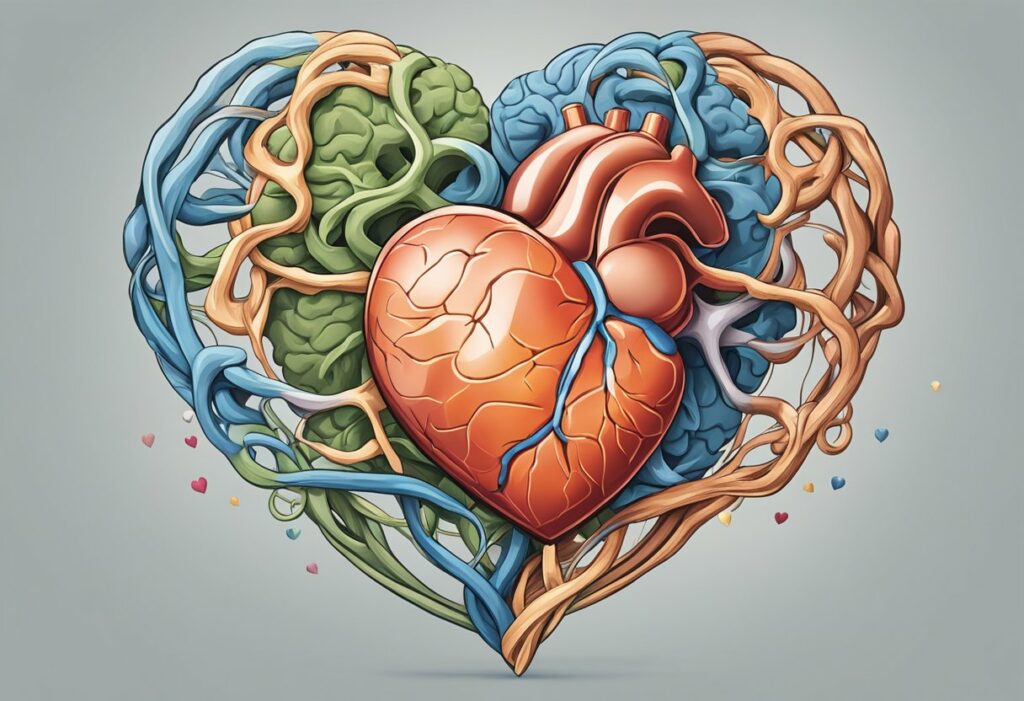The Trio of Emotions: Unpacking the Three Components of Love Explained

Love, often regarded as the most profound human emotion, encompasses a vast spectrum of feelings and stages. Psychologists have long been fascinated by its complexity and have striven to deconstruct it into more manageable elements. They have come to a consensus that love consists of three core components: intimacy, passion, and commitment. These elements interact in a dynamic way, shaping the various forms of love that we experience throughout our lives.
Intimacy is the cornerstone of a loving relationship, involving a deep sense of connection and shared understanding with another person. It is characterized by feelings of closeness, bondedness, and warmth. Intimacy grows through mutual self-disclosure and shared experiences, providing a foundation of trust and emotional safety. Without intimacy, relationships lack depth and the personal connection that defines them.
Passion adds the spark and intensity to a loving relationship, encompassing the drives connected to both limerence and sexual attraction. Passionate love is full of energy and longing, often epitomized by the excitement and euphoria of new love. While passion can ebb and flow over time, its presence is crucial for maintaining the vitality and romance in a relationship.
Understanding Love

Love is a complex emotion intertwined with human experience. This section explores the nature of love, its psychological underpinnings, and cultural contexts.
Defining Love
Love is notoriously difficult to define due to its varied expressions and experiences. However, it commonly encompasses a range of feelings from deep affection to intense passion. Psychologists often break down love into three core components:
- Intimacy: The sense of close connection and shared experiences between individuals.
- Passion: The intense, driving feelings often associated with romantic and physical attraction.
- Commitment: The decision to maintain a relationship over time.
Psychological Perspectives
The study of love in psychology reveals its multifaceted nature. Two notable theories include:
Sternberg’s Triangular Theory of Love: This theory suggests that love consists of three components:
- Intimacy
- Passion
- Commitment
Attachment Theory: Proposed by Bowlby and Ainsworth, it posits that early attachments with caregivers can influence later relationships in terms of:
- Security
- Anxiety
- Avoidance
These perspectives underline the interconnectedness of love with one’s wellbeing and developmental history.
Cultural Influences
Culture significantly shapes how love is perceived and expressed. Love can manifest in:
- Romantic love, emphasized in Western societies, often focusing on individual fulfillment and emotional expression.
- Companionate love, prevalent in many Eastern cultures, intertwining family approval and practical considerations in relationships.
This cultural framing impacts not only the experience of love but also societal expectations and relationship dynamics.
The Components of Love

Love is multi-faceted, encompassing intimacy, passion, and commitment. These three components are collectively known as the triangular theory of love.
Intimacy
Intimacy refers to the feelings of closeness, connectedness, and bondedness in loving relationships. It is the emotional component that involves sharing personal thoughts and feelings with one’s partner.
- Qualities of Intimacy:
- Deep attachment
- Comfort
- Mutual understanding
Passion
Passion is the driving force that includes physical attraction and sexual desire. It reflects the motivational aspect of love, often characterized by physiological arousal and an intense longing to be with another person.
- Characteristics of Passion:
- Intense emotional arousal
- Sexual attraction
- Intrusive thoughts about the partner
Commitment
Commitment is the cognitive choice to stay with one another long-term and work on maintaining the relationship. It signifies a decision to love someone and maintain that love over time.
- Elements of Commitment:
- Longevity
- Stability
- Ongoing decision to maintain love
Dynamics of Love

Love is a complex emotion characterized by its multifaceted nature involving a series of developments, maturation, and challenges.
Developing Relationships
At the onset of a relationship, two individuals often experience a potent chemical attraction alongside an intense emotional connection. Key factors influencing this stage include common interests, physical attraction, and communication skills. These can be represented as:
- Common Interests
- Shared hobbies
- Similar values
- Physical Attraction
- Facial symmetry
- Body language
- Communication Skills
- Active listening
- Empathy
Maturation of Love
As relationships progress, love typically deepens and becomes more sophisticated. This stage is marked by a transition from passionate love, characterized by excitement and infatuation, to companionate love, identified by deep affection and commitment. Important aspects of this process include:
- Mutual Respect
- Understanding differences
- Valuing one another’s opinions
- Shared Experiences
- Overcoming obstacles together
- Creating a joint history
Challenges in Love
Love is not without its challenges, which can either strengthen or weaken a bond. Common hurdles that couples may face involve jealousy, communication breakdowns, and external stressors like financial pressures or societal expectations. Addressing such issues effectively requires:
| Challenge | Strategy |
|---|---|
| Jealousy | Trust building |
| Communication Breakdowns | Conflict resolution skills |
| External Stressors | Support systems and coping mechanisms |
